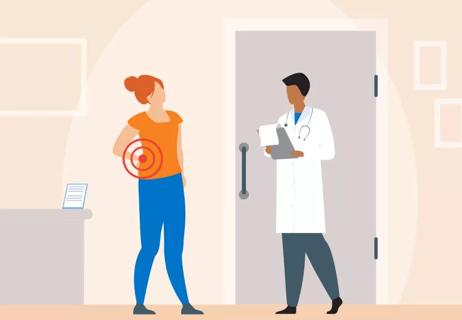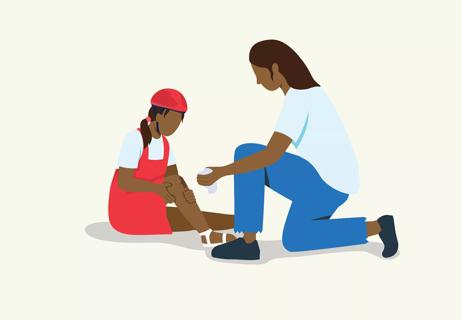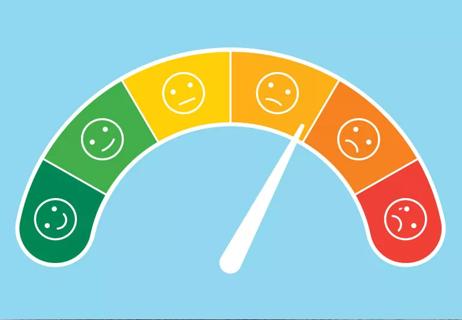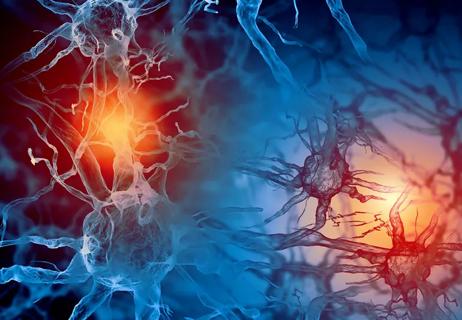Acute pain goes away with treatment, while chronic pain is long-lasting and can be complex to manage

Pain is a sign from your body that something is wrong. But there are different types of pain, starting with two major categories: acute and chronic. So, what’s what? Family medicine doctor Charles Garven, MD, explains.
Advertisement
Cleveland Clinic is a non-profit academic medical center. Advertising on our site helps support our mission. We do not endorse non-Cleveland Clinic products or services. Policy

Acute pain usually comes on suddenly and is caused by something specific. Chronic pain is ongoing and usually lasts longer than three to six months.
“I had a mentor once describe acute pain as a loud alarm in an emergency, like a broken leg. It’s your body warning you that something is wrong and needs to be addressed,” Dr. Garven illustrates.
“Chronic pain, then, is a broken alarm that keeps ringing — and it can sometimes keep ringing even if there’s no longer a fire burning.”
Let’s take a closer look at some of the differences between these two types of pain.
“Acute pain starts quickly and goes away once the issue is addressed or healed,” Dr. Garven explains.
This type of pain can last just a little while, like if you fall on the pavement and skin your knee, or it can last longer, like when you’re recovering from surgery.
Some possible causes and examples of acute pain include:
To treat acute pain, a healthcare provider will focus on managing whatever’s causing the pain. But as you can imagine, this means that treatment methods vary widely.
Advertisement
Here are a few common treatments for various types of acute pain:
“Once acute pain goes away, you can go on with life as usual,” Dr. Garven says. But sometimes, acute pain lasts — and eventually, it can morph into chronic pain.
Chronic means “persistent” or “long-lasting,” so chronic pain is pain that sticks around for longer than three months (though, you may sometimes hear a timeframe of six months instead).
“Chronic pain is essentially your nervous system perceiving ongoing danger or problems, so it continues to send pain signals,” Dr. Garven explains. “This can continue even after the injury or illness that caused it has healed or gone away.”
Chronic pain can impact your entire life. Living in daily pain puts stress on your body, which can lead to issues like:
“With chronic pain, the thinking is generally that the nerves become overactive or hypersensitive — like a fire alarm that’s going off all the time, even if the toaster is just slightly burning a piece of toast,” Dr. Garven poses. “The brain gets accustomed to it and continues to expect the same pain signals. So, a lot of the language around managing chronic pain talks about ‘reprogramming’ or ‘retraining’ the system.”
You can develop chronic pain after surgery or injury, like if something doesn’t heal right or continues to cause lasting problems. That’s when acute pain turns into chronic pain.
But chronic pain is also linked to various medical conditions, like:
But sometimes, the reason for chronic pain isn’t obvious or easy to identify. Some people live with chronic pain even without a clear cause, like a chronic condition or a past injury to point to.
Because chronic pain can affect all aspects of your life, it can be complex to manage and treat. Often, it takes a team of healthcare providers working together to get to the root of your pain and figure out how to best manage it — like by creating a comprehensive pain management plan that includes multiple types of treatments.
Advertisement
There’s no one-size-fits-all way to manage chronic pain. But here’s a look at some of the options that might be part of your treatment:
Advertisement
“People often want to be able to get back to the lives they used to lead before they developed chronic pain,” Dr. Garven notes. “While your provider may not be able to get you exactly where you used to be, there’s a lot they can do to help you manage your pain and regain many of your abilities.”
When it comes to pain, there’s no “better” or “worse.” Sure, there are degrees of pain: A stubbed toe is, of course, far less painful than a broken bone. But for the most part, trying to compare different types of pain is like comparing apples and to sailboats: You just can’t do it.
Whatever type of pain you’re experiencing and whatever is causing it, remember: Pain is your body’s way of telling you that something is wrong. Talk to a healthcare provider to find safe and effective relief.
Advertisement
Learn more about our editorial process.
Advertisement

Arthritis, migraines and endometriosis are common causes of chronic pain

Not all signals of physical pain actually make it to our brains — and you have some power over it

Find the right sleep position to tame your joint pain

Good pain or bad? Know the different kinds and when to seek help

Therapy helps pain sufferers get their sleep

Tips to help your pain management specialist help you

In a major study, 93% of people saw a reprieve in pain

Research shows that the pain experience differs for women and men

The best parenting style balances enforcing rules and showing plenty of love

Tips include cutting back on sugar, focusing on exercise and managing stress

It can be harder to let go when you’ve invested time, energy and emotions — but it might be the healthier choice long term